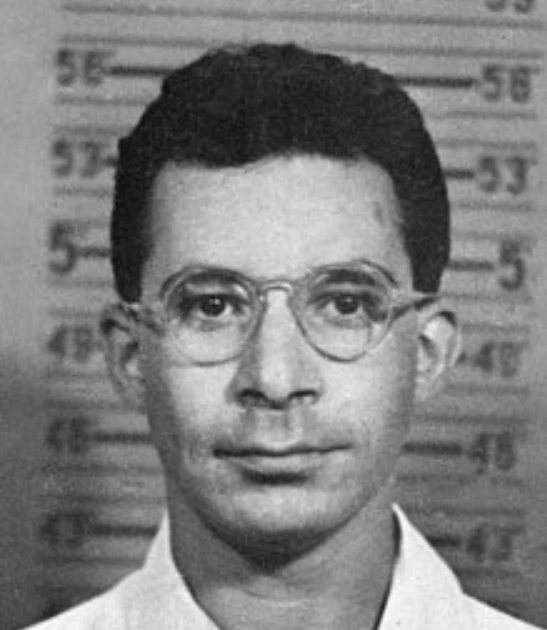Discover the deadly history of the Demon Core, a plutonium sphere that claimed lives and changed nuclear science forever.
“Don’t feel like reading? Immerse yourself in the chilling tale through our audiobook version—just hit play and let the story unfold!” 👇👇👇
The story of the Demon Core is a haunting tale of scientific ambition, human error, and the catastrophic potential of nuclear energy. A small sphere of plutonium—weighing just six kilograms—became infamous for taking the lives of several scientists and leaving a legacy of fear and fascination. But what was the Demon Core, and why was it so deadly? In this blog, we’ll explore its origins, the tragedies it caused, and the science behind its mysterious blue light.
What Was the Demon Core?
The Demon Core was a spherical mass of plutonium-239 designed as part of the Manhattan Project, the U.S. initiative to develop nuclear weapons during World War II. Measuring about 8.9 cm in diameter, this dense metallic ball was created to serve as the core of a third atomic bomb, following the ones dropped on Hiroshima and Nagasaki in August 1945.

Although the war ended before the third bomb could be deployed, the core became a subject of intense scientific study. Researchers sought to understand its nuclear properties and harness its potential for future weaponry and energy applications. However, the experiments on the Demon Core proved to be perilous.
The First Tragedy: Harry K. Daghlian’s Fatal Experiment
On August 21, 1945, 24-year-old scientist Harry K. Daghlian was conducting an experiment at the Los Alamos National Laboratory in New Mexico. His task involved stacking tungsten carbide bricks around the core to measure the neutron reflection—a critical parameter for nuclear chain reactions.

As the night grew late, most of his colleagues had left, but Daghlian’s curiosity kept him working. While carefully placing the bricks, one slipped from his hand and fell onto the core. This momentary mistake caused the plutonium core to go critical, emitting a burst of radiation accompanied by a bright blue flash. Daghlian instinctively removed the brick, but the damage was done.

Within moments, his body began absorbing a lethal dose of radiation. Over the next 25 days, Daghlian suffered from acute radiation sickness, experiencing swelling, skin irritation, and organ failure. On September 15, 1945, he succumbed to his injuries, becoming the first victim of the Demon Core.

The Second Tragedy: Louis Slotin’s Fatal Experiment
Less than a year later, on May 21, 1946, another scientist, Louis Slotin, met a similar fate. A seasoned physicist, Slotin was demonstrating an experiment to his colleagues. He used two beryllium hemispheres to reflect neutrons around the core, attempting to measure its criticality. Slotin, confident in his skills, used a screwdriver to separate the hemispheres manually—a risky practice he had performed several times before.

During the demonstration, the screwdriver slipped, allowing the hemispheres to close over the core. Once again, the plutonium sphere went critical, releasing an intense burst of radiation and the same eerie blue light. Slotin immediately separated the hemispheres, saving his colleagues from greater exposure. However, he absorbed a fatal dose of radiation in the process.

Slotin’s health deteriorated rapidly. Within nine days, he succumbed to acute radiation syndrome, marking the second death attributed to the Demon Core.
The Science Behind the Deadly Blue Light
The mysterious blue glow observed during these incidents is known as Cherenkov radiation. When charged particles like electrons are emitted from a radioactive source at speeds faster than the speed of light in their surrounding medium (such as air or water), they create a shockwave of light. This phenomenon produces the glowing blue light often associated with nuclear reactions.
While the light might appear mesmerizing, it signifies lethal levels of radiation capable of breaking molecular bonds in human tissue, leading to irreparable DNA damage. The victims of the Demon Core experienced such effects, with their bodies failing at the cellular level due to radiation exposure.
The Origins of the Demon Core
The Demon Core’s story begins during World War II, a time of intense scientific rivalry and military innovation. As part of the Manhattan Project, the U.S. aimed to create a weapon that could end the war decisively. After the successful tests of atomic bombs in July 1945, the Demon Core was prepared as the “heart” of a third bomb intended for Japan.
However, following the devastation caused by the bombings of Hiroshima and Nagasaki, Japan surrendered, and the war ended. The third bomb was never used, leaving the Demon Core intact. Scientists repurposed it for experiments, unaware of the tragedies it would soon cause.
The End of the Demon Core
After the deaths of Daghlian and Slotin, the Demon Core earned its ominous nickname. Recognizing its dangers, the U.S. government decided to discontinue criticality experiments involving the core. In 1946, it was melted down and incorporated into the U.S. nuclear stockpile, ensuring that its radioactive material would be used for other purposes.
Lessons from the Demon Core
The tragic incidents involving the Demon Core highlight the risks of scientific experimentation with powerful and unpredictable materials. They underscore the need for rigorous safety protocols, especially when dealing with nuclear energy. These lessons have shaped modern nuclear research, emphasizing caution and respect for the immense power of radioactive elements.
Conclusion
The Demon Core’s story is a sobering reminder of the potential consequences of human error and the destructive power of nuclear energy. While its legacy is marked by tragedy, it also serves as a testament to the bravery of scientists who pushed the boundaries of knowledge, often at great personal cost. By remembering their stories, we honor their contributions and ensure that such incidents remain a thing of the past.









